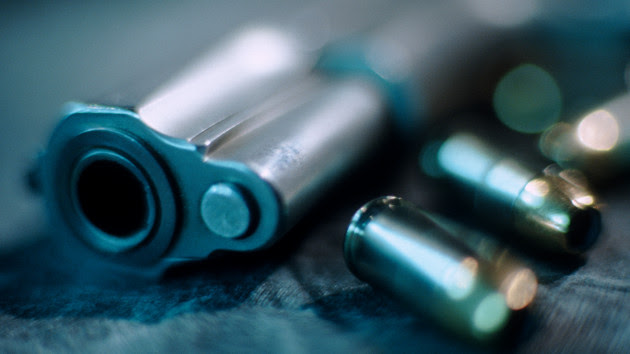(NEW YORK) — As the total of mass shootings in the United States this year climb, a new report focuses on gun violence in Chicago, suggesting that over half of the city’s Black and Hispanic population and a quarter of its white population have seen a shooting by the age of 40.
The recent study published by JAMA Network Open, analyzed 2,418 Chicagoans from The Project on Human Development in Chicago Neighborhoods (PHDCN), a Harvard project that followed multiple cohorts of children from 1995 to now.
“We followed the same individuals, from multiple birth cohorts, over the last quarter-century,” said principal investigator of PHDCN and Harvard professor Robert J. Sampson. “We hoped it would last for decades, but nobody was sure.”
Now, 28 years later a study led by Dr. Charles Lanfear, in collaboration with researchers from Harvard and Oxford universities, explores a piece of the Chicago project.
The recent study’s sample was split evenly between men and women born in the early 1980s to the mid-1990s, drawn from PHDCN data and includes 890 Black respondents, 1,146 Hispanic respondents and 382 white respondents, with around 56% of Black and Hispanic residents and 25% of white Chicagoans witnessing at least one shooting by the time they turned 40.
Although the rate that white residents witnessed a shooting was significantly lower than Black and Hispanic Chicagoans, the average age when participants witnessed their first shooting was just 14 for the whole population polled.
“That’s pretty early, but a lot of kids are still seeing shootings earlier than that,” said study lead author Dr. Charles Lanfear, from the University of Cambridge’s Institute of Criminology. “Fourteen might be an average, but a lot of it is happening before then too.”
Analyzing the numbers in the study group that fell victim to gun violence, of the white participants, 3.13% had been shot by the age of 40. By contrast, of the Black and Hispanic participants, 7.47% and 7.05% had been shot respectively. According to the report, one Black respondent and one Hispanic respondent were fatally shot. The average age for being shot was 17 years old.
According to the results of the study, the racial and ethnic differences were “strongly age-patterned” with no white respondents being shot after the age of 21, but seven Black participants and five Hispanic participants being shot after 21.
Male respondents were five times more likely to be exposed to being shot than female respondents by age 40 with women (42.81%) less likely to witness a shooting than men (57.64%).
“We know, of course, that men are much more likely to be shot than women because men are much more likely to shoot people than women,” Lanfear told ABC News. “But the one remarkable thing was just how similar the levels of seen shootings are. So, one thing is that it seems like women are probably a lot more exposed to gun violence than we typically know and understand at community levels.”
The researchers of the study argue that the early and consistent exposure to gun violence may cause mental and physical health concerns, not just in Chicago, but across the United States.
“You would imagine that in places where there’s very high levels of exposure, that there’s population health effects that in neighborhoods… might be subject to disproportionate health impacts if these things occur due to exposure,” Lanfear said.
The PHDCN surveyed thousands of children in the 1990s in Chicago and continuously follow their lives growing up in Chicago or living elsewhere.
Participants of the project were chosen at random from a list of 80 Chicago districts, encapsulating the city’s differing racial groups and levels of “social advantage, or lack thereof,” according to the project.
While the recently published study focuses on Chicagoans who witness shootings, researchers emphasize the trend of violence in the country is not specific to the Midwest city.
“Chicago is not a hotbed of violence compared to other cities,” Sampson told ABC News. “In fact, Chicago was not even in the top 20 of homicide rates among cities over 100,000 population in 2019, the last year we have reliable data for comparisons.”
“All major cities have pockets of violence somewhere,” Lanfear said. “ There’s always places where there’s neighborhoods that are very dangerous and the exposure to violence is concentrated in areas where there’s more of it.”
Copyright © 2023, ABC Audio. All rights reserved.












